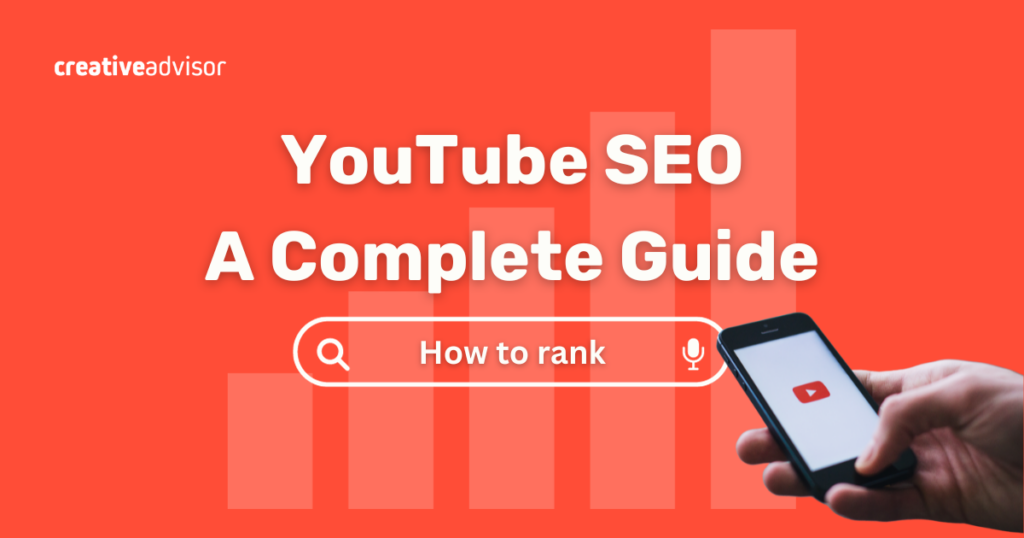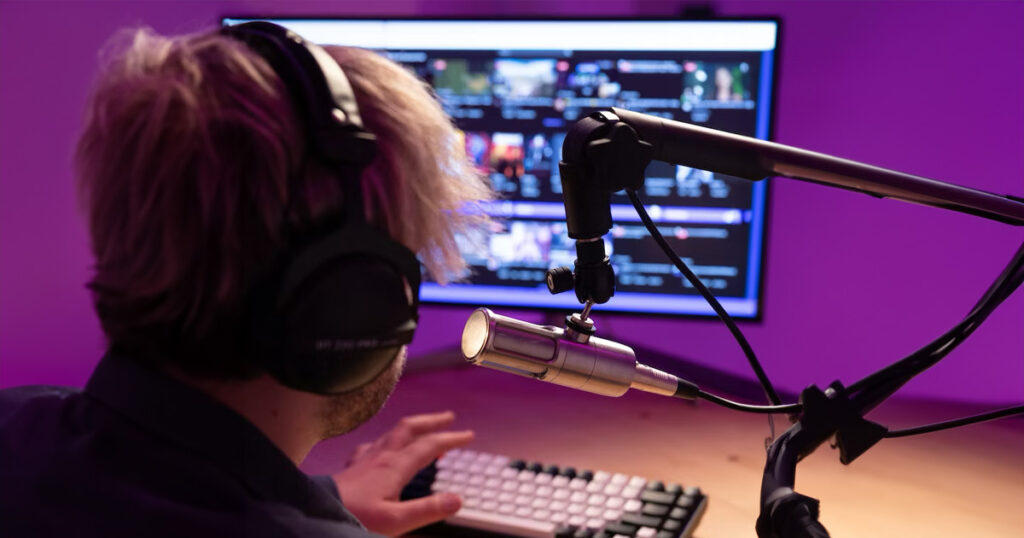Whether you’re a seasoned YouTuber or just starting out, YouTube SEO is an essential part of growing your channel. By understanding and leveraging SEO strategies, creators can significantly enhance their videos’ impressions, views, and click-through rate (CTR). In this comprehensive guide, we’ll give you insights and tips that will equip you with the knowledge to attract more viewers, boost engagement, and elevate your presence with YouTube SEO.
What is YouTube SEO and why do I need to know it?
YouTube SEO refers to the process of optimizing your content to rank higher in YouTube’s search results. Much like traditional SEO for websites, YouTube SEO is about employing various techniques and strategies aimed at increasing the visibility and engagement of your videos.
A well-optimized YouTube channel can lead to increased subscribers, higher views, and, if you’re monetizing your content, significant revenue. It’s not just about being found; it’s about being found by the right audience, at the right time, with the right content.
Understanding YouTube’s Algorithm
The purpose of the YouTube ranking algorithm is to connect viewers with videos they’re most likely to enjoy and engage with. On a technical level, YouTube’s algorithm is a sophisticated machine learning recommendation system that analyzes billions of parameters. But for simplicity’s sake it’s best to just think of it as a matchmaker.
Within YouTube’s recommendation system, there are several main ranking signals used to determine the order in which videos are presented to users. According to a research paper published by Google engineers, the top ranking factors are the following:
- Watch time
- Freshness
- User engagement
- Personalization
- Collaborative filtering
Watch Time
The amount of time users spend watching a particular video is an important signal. Videos that have higher watch times are more likely to be recommended to users.
Freshness
The system considers the recency of videos when making recommendations. It takes into account newly uploaded content as well as the latest actions taken by the user to ensure that the recommendations are up-to-date.
User Engagement
This is all about how people interact with a video. Do they click on it when they see it (click-through rate)? Do they hit the like button, leave comments, or share it with friends? The more people interact with a video, the more YouTube thinks, “This must be interesting!” and shows it to others.
Personalization
YouTube pays attention to what you like. It looks at the videos you’ve watched before, the channels you subscribe to, and the videos you’ve liked. Then, it recommends videos that are similar, sort of like a friend who knows your taste in movies and suggests new ones you might like.
Collaborative Filtering
This is a bit like finding a movie buddy. YouTube looks at what you and other people watch or like. If you and someone else like a lot of the same videos, YouTube might suggest a video that the other person liked, thinking you might like it too.
These ranking signals are used in combination to generate a list of recommended videos that are intended to be both relevant and engaging for each user.
Key Strategies for YouTube SEO
Conducting Keyword Research
Keyword research is often the first and most crucial step in optimizing your YouTube content for rankings. It involves finding words or phrases that people are likely to use when searching for videos.
- Define your audience. Before diving into keywords, think about your audience. What are they interested in? What might they be searching for? Understanding your audience’s interests and problems will guide your keyword research.
- Choose your focus keyword. Begin with broad terms related to your video’s topic. These are your focus keywords. For example, if your video is about making spaghetti, your focus keyword could be “spaghetti.”
- Use YouTube’s search suggestions. Type your primary keyword into YouTube’s search bar and note the suggestions that appear. These are popular searches related to your keyword and can give you ideas on what people are looking for.
- Analyze the competition. Look at videos from similar channels or on similar topics. What keywords are they targeting in their titles, descriptions, and tags? This can provide valuable insights into what keywords are working for others in your niche.
- Utilize keyword tools. There are many tools available that can help with keyword research. Tools like Google Keyword Planner, TubeBuddy, or vidIQ can provide data on keyword search volume, competition, and related phrases.
- Look for long-tail keywords. These are longer, more specific phrases that are less competitive but can be very targeted to your audience. For instance, instead of just “bread baking,” a long-tail keyword might be “easy whole wheat bread baking.”
- Assess relevance and search volume. Choose keywords that are highly relevant to your video content and have a decent search volume. High search volume means more people are looking for that term, but be mindful of too much competition.
- Incorporate keywords naturally. Once you have your keywords, use them naturally in your video title, description, and tags. Remember, stuffing too many keywords can seem spammy and may turn off your viewers.
- Stay on top of trends. Stay updated with changing trends and popular topics in your niche. Tools like Google Trends can help you see what’s currently popular or rising in interest.
- Iterate and evolve. Keyword research isn’t a one-time task. Regularly review and update your keywords based on new trends, audience interests, and your own channel’s performance data.
By following these steps, you can identify the right keywords to help your YouTube videos get found by the right audience, ultimately increasing your views and engagement. Remember, the goal is to connect with your audience by creating content that they are actively searching for.
Optimizing Video Content
Optimizing your video content is more than just about using the right keywords. It’s about ensuring your video is crafted and structured in a way that appeals to both YouTube’s algorithm and your target audience.
- Video title. Your title is the first thing viewers notice. Make sure it’s clear, compelling, and includes your primary keyword. A good title should give viewers an idea of what the video is about while also enticing them to click.
- Video description. The description helps YouTube and viewers understand the context of your video. Use this space to include secondary keywords, a brief summary of the video content, and any relevant links or calls to action. The first couple of lines are the most important as they appear in the search results and above the fold (before the viewer clicks “Show more”).
- Tags. Tags help YouTube understand the content and context of your video. Include a mix of broad and specific tags, starting with your main keyword and followed by related terms and variations.
- Video quality and editing. High-quality, well-edited videos tend to engage viewers longer, increasing watch time, which is a critical factor in YouTube’s rankings. Ensure your video has good picture and sound quality, and use editing to keep it dynamic and interesting.
- Engaging content. Ultimately, the content itself needs to be engaging. This means being clear, informative, entertaining, or whatever is required to hold your audience’s attention. The longer viewers watch your video (audience retention), the more YouTube is likely to promote it.
- Keyword-rich spoken content. YouTube’s algorithm can analyze the spoken content in videos, so mentioning your primary keywords naturally during your video can help with SEO.
- Captions and subtitles. Adding captions not only makes your content accessible to a wider audience, including those who are deaf or hard of hearing, but it also gives YouTube more text to index, which can help with SEO.
- Thumbnail. An eye-catching thumbnail can significantly improve your video’s click-through rate (CTR). Use high-quality images with contrasting colors and, if appropriate, text to tell viewers what the video is about.
- Video length. Longer videos have the potential to keep viewers on YouTube for an extended period, which the platform likes. However, the length should always be appropriate to the content; never stretch a video longer than what provides value to the viewer.
- End screens and annotations. Use these to promote other videos, playlists, or your channel, keeping viewers engaged with your content longer.
Remember, while keywords and SEO are important, the best way to rank higher is to create videos that people want to watch, share, and return to. Balancing SEO with high-quality, viewer-centric content is the key to success.
Encouraging Viewer Engagement
As we mentioned earlier, engagement signals are a key ranking factor for YouTube SEO. These signals include likes, comments, shares, and the overall watch time of your videos. Here are some tips to create content that not only engages your viewers, but also boosts these vital engagement metrics.
- Start strong. The first few seconds of your video are critical. Start with a hook that grabs attention immediately. This could be a provocative question, a surprising fact, or a teaser of what’s to come. The goal is to compel viewers to keep watching.
- Deliver value early. Ensure that your video delivers on its promises early on. If viewers find what they’re looking for quickly, they’re more likely to view the video positively, leading to likes and shares.
- Encourage viewer interaction. Directly ask your viewers to like, comment, and share. Engage with them by posing questions, encouraging them to leave their opinions, or asking them to suggest topics for future videos. Viewer comments can also provide valuable insights into what your audience enjoys or wants more of.
- Tell a story. Humans are naturally drawn to stories. Structuring your content with a clear beginning, middle, and end keeps viewers engaged. Even if you’re creating educational content, framing it within a story or adding real-life examples can make it more relatable and engaging.
- Use visually appealing graphics and editing. High-quality visuals and professional editing can significantly enhance viewer engagement. Use graphics, animations, and text overlays to emphasize key points and keep the video visually interesting.
- Maintain a consistent posting schedule. Regularly uploading new content can help keep your audience engaged over time. Consistency also trains your viewers to expect new content at specific times, increasing the likelihood of them returning to your channel.
- Interactive end screens. Use end screens effectively to promote other videos, playlists, or your channel. Guiding viewers to more of your content can increase watch time across your channel, a key engagement metric for YouTube.
- Personal connection. Be authentic and connect with your audience on a personal level. Sharing personal stories, experiences, or behind-the-scenes glimpses can make viewers feel more connected to you, fostering community and loyalty.
- Quality audio and clear voice overs. Clear, crisp audio and a confident, engaging speaking style can keep viewers listening longer. Poor audio quality, on the other hand, is one of the top reasons viewers leave a video prematurely.
- Challenging the viewer. End your videos with a call to action or a thought-provoking question. This can encourage comments and discussions, which are strong engagement signals for YouTube.
By focusing on these components, you can create content that not only captivates and retains your audience, but also signals to YouTube that your content is engaging and valuable, helping to boost your SEO efforts. Remember, the most engaging content is that which resonates with your audience and adds value to their lives, whether through entertainment, information, or inspiration.
Additional Tips for YouTube SEO
Here’s how you can use chapter markers, subtitles, collaborations, and playlists to even further boost your video’s rankings.
Chapter Markers
Chapter markers divide your video into sections, each with a brief title. They enhance the viewer experience, and thus their engagement, by allowing users to easily navigate to different parts of the video or revisit sections they find interesting.
Chapters can improve your video’s discoverability and engagement, as they provide additional text for YouTube’s algorithm to index and understand your content better.
Subtitles
Subtitles are the text versions of the spoken content in your video. They can be either auto-generated or added manually. By including subtitles you make your content accessible to a broader audience, including those who are deaf, hard of hearing, or speak other languages.
Just like chapters, subtitles provide more text for indexing, helping YouTube to better understand content.
Collaborations and Cross-promotion
Collaborating with other YouTubers or influencers in creating content will help you reach a wider audience, as it exposes your channel to the other person’s audience. Likewise, cross-promoting your content on other channels and social media platforms can help you attract new viewers.
These two strategies can lead to stronger engagement signals from the resulting increase in shares, likes, and comments.
Playlists
In addition to helping you organize your content, playlists can also play a significant role in boosting viewer engagement and watch time. They provide a structured viewing experience, guiding viewers from one video to another seamlessly, improving your engagement signals. To maximize the SEO benefits of playlists follow these two pieces of advice:
Build playlists around specific themes, topics, or series. This thematic grouping keeps viewers engaged as they can easily find a collection of videos that interest them.
Use relevant keywords in your playlist titles and descriptions to improve discoverability. Just like individual videos, playlists can also be optimized for search.
Leveraging YouTube Analytics for SEO
YouTube Analytics is a valuable resource for any YouTuber looking to optimize their SEO. This tool provides a wealth of data, offering deep insights into how your content performs and how viewers interact with your videos. Regularly reviewing and analyzing these metrics will help you refine and adjust your strategies, ultimately enhancing your channel’s performance.
Here’s how YouTube Analytics can guide your SEO efforts:
Understanding Viewer Behavior
Watch time and retention rates. These metrics show how long viewers are watching your videos and at what point they might be dropping off. High watch time and retention rates are strong indicators of engaging content, which as we know is favored by YouTube’s algorithm.
Traffic sources. Analytics reveals where your viewers are coming from — be it search results, suggested videos, or external sources. Understanding how you acquire your audience can help you tailor your content and SEO strategies to target these sources more effectively.
Audience Insights
Demographics. Knowing the age, gender, location, and language of your audience can help you create more targeted and relevant content.
Interests. Insights into other videos and channels your audience watches can help you build a personality profile of your average viewer and even highlight potential collaboration opportunities.
Engagement Metrics
Likes, comments, and shares. High engagement rates are a positive signal to YouTube’s algorithm. Analyzing which videos get more likes, comments, and shares can help you understand what resonates with your audience.
Click-through rate (CTR). This metric shows how often viewers clicked on your video after seeing the thumbnail. A low CTR might indicate the need for more compelling titles or thumbnails.
Content Optimization
Keywords. See which keywords are driving traffic to your videos. You might discover new keywords to target or find that certain terms aren’t performing as expected.
Best performing content. Identify which videos are performing the best in terms of views, engagement, and watch time. Analyzing these can provide insights into topics, formats, or styles that work well with your audience.
Refining Your Strategy
Experiment and adjust. Use the data to experiment with different types of content, upload times, and SEO tactics. Monitor how these changes affect your metrics.
Feedback loop. Viewer comments and feedback can also offer direct suggestions for improvement or ideas for new content. Make sure you’re asking them for their opinions regularly.
Tracking Progress Over Time
Trends. Look for long-term trends in your channel’s performance. Are your views and subscriber count growing over time? What were you doing right when you saw the most growth?
Goals and benchmarks. Set specific goals based on your analytics (e.g., increase average watch time, improve CTR, etc.) and use the data to track your progress.
By regularly diving into YouTube Analytics, you can gain a clearer understanding of what’s working and what’s not. This ongoing process of review and adjustment is key to developing a successful YouTube strategy, ensuring your content not only reaches but also resonates with your intended audience, ultimately boosting your SEO efforts on the platform.
Final Thoughts
Mastering YouTube SEO is a continuous journey, not just a single step. It’s about evolving and refining your strategies over time, always aiming to align with your audience’s changing tastes and the latest trends.
YouTube’s algorithm is always evolving. What works for SEO today might not work tomorrow. So it’s important that you stay informed about these changes and adjust your SEO strategy accordingly.
Finally, remember that SEO is a tool, not the goal. SEO should not overshadow the core purpose of your content. Your main goal as a YouTuber should be to create videos that inform, entertain, or help your audience. SEO is just a means to ensure that your content reaches as many relevant viewers as possible.
Frequently Asked Questions (FAQs)
Do video tags still matter in YouTube SEO?
While not as critical as they once were, tags can still help YouTube understand the content and context of your video, especially for less commonly used words. Tags will also help mitigate for when a user uses a variation of your key phrase or introduces a typo.
What are some free YouTube SEO tools?
Tools like TubeBuddy, vidIQ, and Google Keyword Planner offer free versions with essential features for keyword research, SEO analysis, and performance tracking. However, to get the most out of some of these tools you’ll have to upgrade to their paid tiers, which provide more advanced features and deeper insights for serious YouTubers looking to further optimize their channels.
Is it worth targeting competitive keywords as a new YouTuber?
As a new YouTuber, it might be more strategic to start with less competitive, long-tail keywords and gradually build up your channel’s authority. Once you’ve established a solid viewer base and consistent engagement, you can start targeting more competitive keywords.




